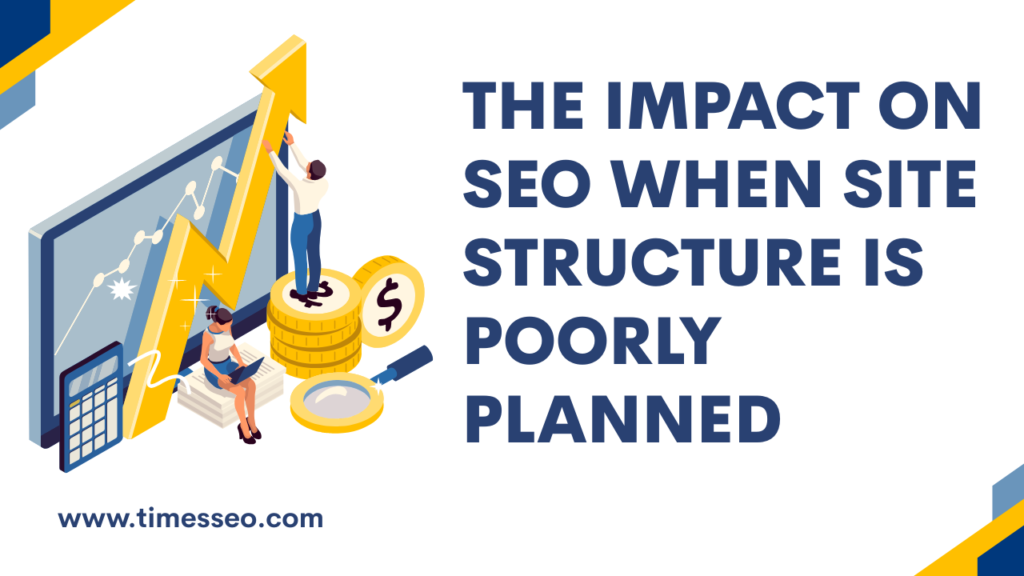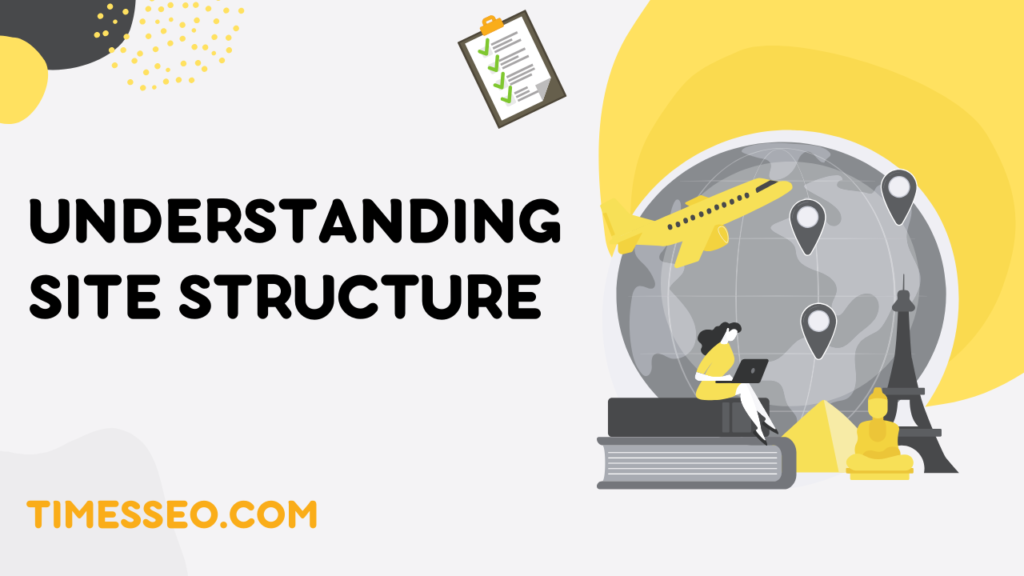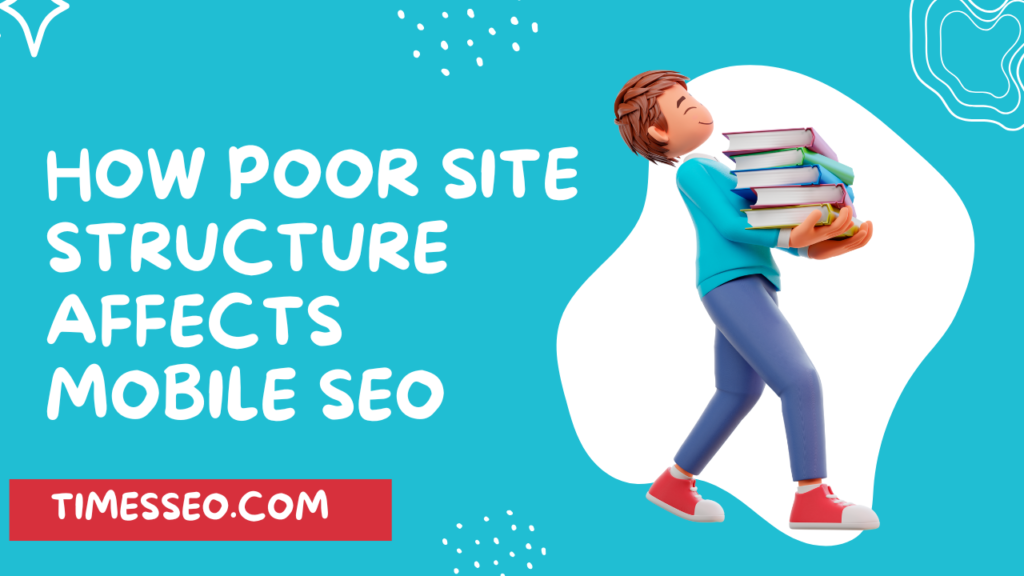
The Impact on SEO When Site Structure Is Poorly Planned
Discover the true impact on SEO when site structure is poorly planned. Learn how bad navigation, broken links, and messy hierarchies can harm rankings and user experience.
Table of Contents
Introduction
Have you ever visited a website where it seems impossible to obtain the information you need? A badly designed site structure is frequently the cause of that annoyance. And here’s the kicker—search engines hate it just as much as users do. Site structure isn’t just about looking neat; it directly shapes your SEO performance. In this article, we’ll break down how poor planning can wreck your rankings and what you can do to fix it.
Understanding Site Structure
About the Site Structure: What is it?
Site structure is basically how your website’s content is organized and connected. Think of it like the blueprint of a house—without a proper design, you end up with confusing hallways, locked rooms, and no clear path. For SEO, a strong structure helps search engines and visitors move smoothly through your site.
Why Search Engines Care About Site Structure
Search engines like Google use crawlers (also called bots) to discover and index your pages. A solid structure makes crawling effortless, while a chaotic one creates dead ends. Even your best content may never appear in search results if it has a logical flow. Internal linking also depends on structure—it spreads authority across your site.
The Basics of a Well-Planned Site Structure
- Hierarchy matters: Keep your homepage at the top, followed by categories, subcategories, and individual pages.
- Navigation clarity: Menus should be intuitive, not overloaded.
- Logical grouping: Content should flow naturally, like chapters in a book.
Signs of a Poorly Planned Site Structure
- Pages buried four or five clicks deep.
- Orphan pages with no internal links.
- Menus crammed with unrelated items.
- Broken links that confuse both users and search engines.
The Direct Impact on SEO When Site Structure Is Poorly Planned
Here’s where the damage shows:
- Crawling issues: Bots waste time on useless pages.
- Indexing gaps: Important content doesn’t get indexed.
- SERP drops: Rankings slide because relevance signals are weak.
Impact on User Experience
User experience (UX) is SEO’s secret weapon. If visitors bounce because they can’t navigate, Google notices. Poor site structure leads to higher bounce rates, fewer pages per session, and ultimately, lost conversions.
How Poor Site Structure Affects Mobile SEO
Google now prioritizes mobile-first indexing. Your SEO will suffer if your navigation is not responsive to mobile devices. Users are irritated by poorly designed mobile menus and leave before participating.
Duplicate Content Issues
Weak structure often creates duplicate pages. For example, multiple URLs leading to the same product page confuse search engines. If canonical tags aren’t set properly, rankings drop because authority gets split.
Impact on Internal Linking Strategy
Broken structure = broken link equity. Without a smooth path for links to flow, authority fails to pass between pages. You also miss chances to optimize internal anchors with strategic keywords.
Case Studies and Real Examples
- Bad example: An eCommerce store with 10+ clicks needed to reach products. Sales tanked, and rankings dropped.
- Good example: A competitor with a flat, intuitive structure climbed search rankings because users and crawlers found content instantly.
Fixing a Poorly Planned Site Structure
- Audit: Use tools like Screaming Frog to uncover crawl issues.
- Map hierarchy: Organize from general to specific.
- Redirects: Clean up broken or duplicate URLs.
- Navigation: Simplify menus and categories.
Best Practices for SEO-Friendly Site Structures
- Keep hierarchy shallow—2–3 levels deep.
- Use keyword-rich URLs.
- Maintain consistent navigation across pages.
- Create topic clusters with pillar content.
Tools to Analyze and Improve Site Structure
- Screaming Frog: Detects crawl errors.
- Ahrefs & SEMrush: Reveal broken links and orphan pages.
- Google Search Console: Highlights indexing problems.
Conclusion
Your site structure is the backbone of SEO. A poorly planned structure doesn’t just frustrate visitors—it actively prevents search engines from recognizing your site’s value. If you want better rankings, higher engagement, and long-term success, start with a blueprint that works for both humans and bots.
Frequently Asked Questions
Because it helps both users and search engines find and understand your content easily.
If pages are hard to find, buried deep, or not showing up in search results, your structure needs fixing.
Yes, mobile-first indexing punishes sites with confusing navigation on small screens.
Try to keep it within 3 clicks from the homepage for the best user and crawler experience.
Run a site audit, identify crawl issues, and reorganize your hierarchy logically.
Table of Contents
Popular Posts
-
 Affordable Technical SEO Audit for Small Business: A Complete Guide26 Jun 2025 Blog
Affordable Technical SEO Audit for Small Business: A Complete Guide26 Jun 2025 Blog -
 How to Get an Affordable Technical SEO Audit for Small Business27 Jun 2025 Blog
How to Get an Affordable Technical SEO Audit for Small Business27 Jun 2025 Blog -
 The Ultimate Local SEO Audit Checklist for Startups28 Jun 2025 Blog
The Ultimate Local SEO Audit Checklist for Startups28 Jun 2025 Blog -
 Local SEO Audit Checklist for Startups: A Beginner’s Guide28 Jun 2025 Blog
Local SEO Audit Checklist for Startups: A Beginner’s Guide28 Jun 2025 Blog -
 Top On-Page SEO Audit Steps for Service Websites Every Business Should Know29 Jun 2025 Blog
Top On-Page SEO Audit Steps for Service Websites Every Business Should Know29 Jun 2025 Blog -
 Technical SEO for WordPress: The Ultimate Beginner’s Guide01 Jul 2025 Blog
Technical SEO for WordPress: The Ultimate Beginner’s Guide01 Jul 2025 Blog -
 The Impact of On-Page SEO Audit Steps for Service Websites on UX01 Jul 2025 Blog
The Impact of On-Page SEO Audit Steps for Service Websites on UX01 Jul 2025 Blog -
 Technical Mobile SEO Audit Tips for Developers02 Jul 2025 Blog
Technical Mobile SEO Audit Tips for Developers02 Jul 2025 Blog -
 Complete SEO Backlink Audit Guide for Better Google Rankings03 Jul 2025 Blog
Complete SEO Backlink Audit Guide for Better Google Rankings03 Jul 2025 Blog -
 Boost Your Rankings with Technical SEO for WordPress01 Jul 2025 Blog
Boost Your Rankings with Technical SEO for WordPress01 Jul 2025 Blog






